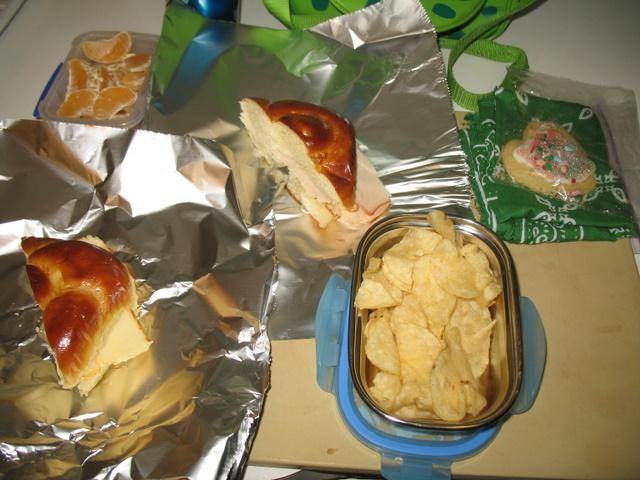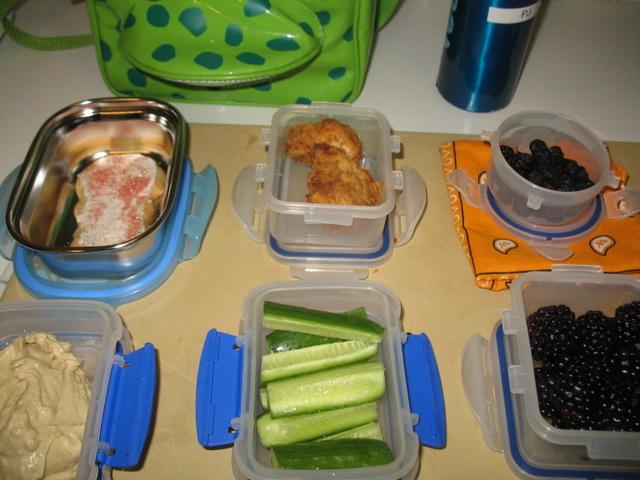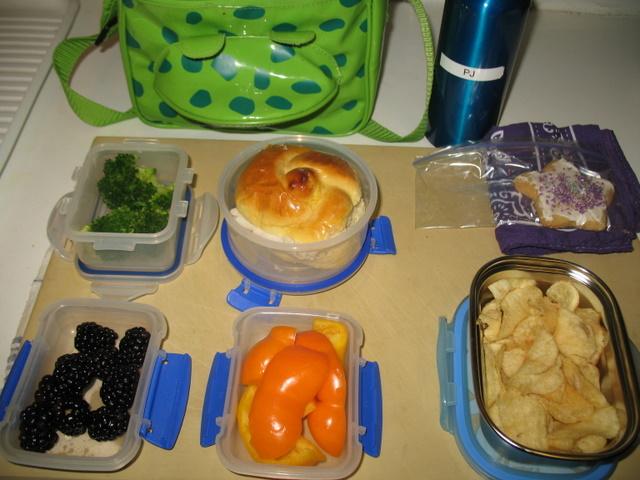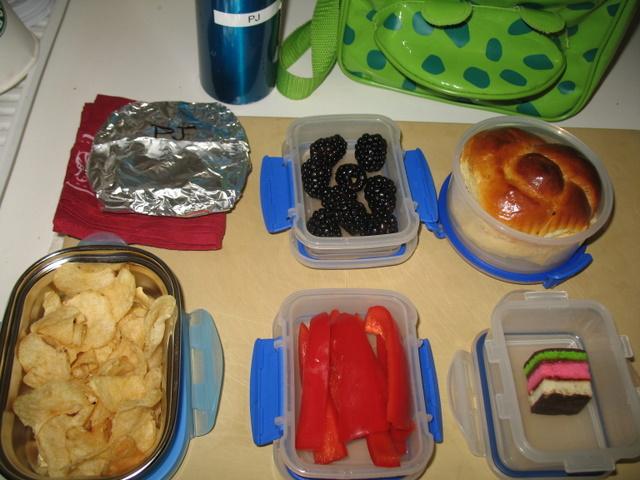-
Posts
28,458 -
Joined
-
Last visited
Content Type
Profiles
Forums
Store
Help Articles
Everything posted by Fat Guy
-

The State of Toasters, 2011 -- or, Why Do They Suck So?
Fat Guy replied to a topic in Kitchen Consumer
emannths, I think #5 is "Unit is flimsy piece of junk, falls apart." -

The State of Toasters, 2011 -- or, Why Do They Suck So?
Fat Guy replied to a topic in Kitchen Consumer
I think this tracks the general trend toward flimsiness in all things. Toasters used to be made from serious metal. Now they're plastic. The internal components track this decline. As is common in several areas, to get a good toaster now you have to go very high-end/"professional" and get something like a Dualit. -
When you go on a statin drug for cholesterol you're told not to eat grapefruit. Then if you Google it you find hundreds of references saying it's fine to eat a grapefruit just don't go on a grapefruit-juice binge. So what's the deal? Can somebody give us an evidence-based primer on grapefruit and statins?
-
Are you asking me? If so, I don't need it to be in one piece.
-
Last week's lunches. Monday was problematic because none of his containers could hold the kind of roll he requested. A trip later in the week to the Container Store yielded one with a good fit. (No lunch Friday; half day)
-
Cupcakes, it seems, are here to stay. I've got no problem with that. I love cake. A cupcake is an individual-size cake. That's a good thing. Still there are aspects of the cupcake trend that are annoying, not least the enduring popularity of Magnolia Bakery's not-good cupcakes: dry, crumbly, with gluey icing. Yesterday I had an assortment of cupcakes from Crumbs and thought they were quite good. I tend not to eat a lot of cupcakes, however, and with Magnolia as such a low bar to clear I have no idea whether my assessment of Crumbs makes sense. So, what are the best cupcakes? And what makes a cupcake better or worse?
-
The high-power blender brands (Vita-Mix, Blendtec, Waring X-treme, et al.) generally make the claim that high-power blenders, by breaking down the cell walls of produce, "enhance the bioavailability of essential nutrients in fruits and vegetables." (In the words of the Vita-Mix website.) The people doing the demos in stores are even more emphatic in their claims: It's impossible to digest and extract the nutrients from X, but if you put it in the high-power blender you get all the nutrients and micronutrients. True or false?
-
Janet, this will be for sliced, boneless, skinless applications. Maybe a couple of sandwiches, maybe a few slices heated and served with gravy, maybe some other ways. I'm not entirely sure. I just need the product ready.
-
I have the assignment to cook a turkey breast. I'd like it not to be dry and disgusting, to the greatest extent possible. The skin doesn't matter. It will be discarded. So a wet cooking method is okay if that's the best move. I don't have sous-vide equipment available for this. Thoughts?
-
Or a blowtorch.
-
I wish I knew the temperature exactly. Probably about 148F. Plain chicken breast filets with a little poultry stock in the bag. Regular zipper bag with air squeezed out by hand.
-
I'm not the first to notice this, but I don't think we have really explored the issue: sous-vide cookery is potentially a revolutionary nonfat cooking method. The other day, I made some boneless, skinless chicken breast cutlets in a water bath. They were delicious. I never thought I'd say that about boneless, skinless chicken breast cutlets. It seems the problem with them is not that they're inherently bad but that they're uniformly ruined by traditional high-temperature cooking methods. They are by definition overcooked. And usually dried out too. Whereas, at low temperature, they actually taste like chicken. The vacuum sealer also provides the opportunity to season foods deeply without using any fat. So, while modernist cooking sometimes gets knocked for using artificial chemicals and whatnot, this is at least one area in which a modernist technique can be ideal for those on restricted diets.
-
I've liked the Costco fruit, quality-wise, the couple of times I've tried it, and I've got no problem with the quantity because it gets eaten. I have two issues with Costco fruit, though: First, I don't like blends. Any combining I do, I like to do myself. Second, the travel time to Costco for me is too much for frozen food, unless I go through the acrobatics of putting a cooler and ice packs into the car.
-
What's the hard science on plastic containers, bottles and packaging? I understand that disposable plastic is often bad environmentally (though there is room for debate on, for example, the paper v. plastic bag issue), but I'm talking about the health issues. Is there bad stuff in the plastic that leeches into food and therefore us? Is it totally harmless? Does it depend on type? Is it only a problem at higher (or lower) temperatures?
-
There used to be a Bojangles' (their apostrophe) near Times Square in New York City. I thought it was clearly the best fried chicken chain -- a cut above Popeye's. I haven't been to one in years, though.
-
Definitely true about the sediment. We consistently see that in our ultrasonic humidifier. After a couple of weeks, the reservoir is full of what looks like rust. I wonder what it all is and if it's bad for you -- or good for you like I suppose it would be were it iron.
-
Do Brita and equivalent water-filtration pitchers actually do anything? I live in New York City, where the drinking water is reputed to be pretty good. I have, however, noticed some chlorine creep over the years -- or something my nose perceives as chlorine. The Brita filter does seem to remove this odor, but I've never tested the theory blindfolded. A quick Google search didn't yield much useful information. Does anyone have the 411 on these things? My understanding is that when you divide the cost of filters you get a cost of about 20 cents (US) per gallon of water from the Brita. So that's not completely trivial. I'd like to be sure it's worth it.
-
I remember in law school being surprised at what a low percentage of lawyers ever saw the inside of a courtroom. The overwhelming majority of my classmates did not go into litigation. Yet, in the popular imagination lawyers go to court. I think it's the same with culinary students. A lot more of them don't go to work in restaurants than is commonly imagined. At the French Culinary Institute, they have a book lying around called something like 150 Food Jobs. I have to find out exactly. Personally, I'd rather do almost anything else with my certificate than work in a restaurant kitchen. It' just too hard.
-
I had been thinking right along those lines for something that would definitely be delicious. For the purposes of this argument, though, I was hoping maybe for an example of a great pastry chef using that combination -- something either from a good restaurant's menu or a serious pastry cookbook.
-
Are there any good desserts that utilize the pairing of apples and chocolate? Someone challenged me to come up with a compelling example and I failed.
-
2011: Year of Modernist Cuisine Welcome to 2011, and to the Society's Year of Modernist Cuisine. Since our earliest days we have played host to the finest discussions on subjects pertaining to culinary modernism, making eG Forums far and away the preeminent online information exchange about culinary innovation. In this, our decennial year, we are making culinary modernism our official theme. This doesn't mean we won't also be discussing Medieval cookery and adding to the Dinner! topic, but it does mean that we are focusing many of our discretionary resources on projects related to modernist cuisine. What is Modernist Cuisine? Modernist cuisine (also often referred to, not accurately, as molecular gastronomy or, a bit more accurately, as the culinary avant-garde) encompasses the culinary innovations, technology, and aesthetic of approximately the past three decades but especially since the turn of the century. Some aspects of modernist cuisine, such as the creations of Ferran Adria at the restaurant El Bulli in Spain, are highly experimental and unfamiliar to most diners. Other staples of modernism, such as sous-vide cookery and the iSi canister, have by now permeated the mainstream and are in use in even some of the most traditional restaurants. Modernist Cuisine is also the title of a groundbreaking book by Society member Nathan Myhrvold ("nathanm") and a team of co-authors he assembled. This five-volume work got its start right here in an eG Forums discussion that has been running since 2004 and now includes more than 4,000 posts. You can learn more about the book and modernist cuisine at the modernistcuisine.com website. Modernist Cuisine in eG Forums Discussions As modernist cuisine has developed, we have been there. This is not an exhaustive list, but the following are most of the modernist-cuisine topics we have explored: The Alinea Project (2004) Spotlight with José Andres (2006) Q&A with NASA scientist Vicki Kloeris (2004) Q&A with Ferran Adria (2004) Q&A with Harold McGee (2004) Q&A with Russ Parsons (2003) Q&A with Grant Achatz (2003) Grant Achatz (2006, ad hoc) Q&A with Heston Blumenthal (2002) Sous-vide: Sous Vide: Recipes, Techniques, & Equipment: 2004-2010 Sous Vide: Recipes, Techniques, & Equipment: 2011- Spherification: Spherification & Gelling of Oils Adventures with Sodium Alginate Divided Aliginate Spherification Using Gluco-calcium Gluconate Lactate Gels: Deep-frying Agar Agar Fluid Gels Methylcellulose in Pastry Recipes: Tips Methocel Transglutaminase (meat glue): Adventures with Transglutaminase Cooking with Activa Chef has Discovered an Enzyme Liquid nitrogen: Cooking with Liquid Nitrogen Liquid Nitrogen Safety Issues Powders: Tapioca Maltodextrin Dining: Alinea Moto Blais El Bulli: (2004) El Bulli: (2005) El Bulli: (2006) El Bulli: (2007) El Bulli: (2010) The Fat Duck: (2002) The Fat Duck: (2003) The Fat Duck: (2004) The Fat Duck: (2005) The Fat Duck: (2006) The Fat Duck: (2007) The Fat Duck: (2008) The Fat Duck: (2009) The Fat Duck: (2010) Books The Big Fat Duck Cookbook Cooking with the Alinea Cookbook and Alinea Under Pressure Modernist Cuisine El Bulli The Sous-Vide Index Our first initiative for our Year of Modernist Cuisine is the sous-vide index, which eG Forums director of operations Chris Amirault and a team of volunteers have been working on for months. The sous-vide topic is the greatest repository of information about sous-vide cookery, and is now indexed here: http://egullet.org/svindex The Modernist Cuisine Tag We have talked internally for almost a decade about the wisdom of creating a modernist-cuisine forum. The trouble is that, even though culinary modernism is a subject unto itself, it's not really possible to separate modernist cookery from discussions of cookery at large. Now, however, thanks to some exceptional programming work by eG Technology director of operations Chris Hennes, we are pleased to announce the Modernist Cuisine tag. When you start a new topic you will now notice a new section beneath the title called "Topic Tags": right now, "Modernist" is the only tag available (once we get the kinks worked out of the system we will be adding others, we are using "modernist" as our testbed for the new feature). To see a list of all topics that have been marked with the modernist tag, follow this link. You can also "subscribe" to the modernist tag, receiving a notification when a new topic is created and tagged "modernist." Finally, we are working on adding the tag feature to the search engine so that you can limit your search to only topics with specific tags. Tags will not affect the positioning of a topic in our post database. They are a way to organize related topics that cut across forums. Further Modernist Cuisine Initiatives But that's not all... In March, coinciding with the release of the Modernist Cuisine book, we will be hosting on online launch event and discussion with Nathan Myhrvold. We will also be announcing, throughout the year, a series of guest appearances and focused topics.
-
You can get that effect if you like. The sous-vide method is pretty flexible because you can pick your temperature to achieve anything from near-liquid to hard-cooked.
-
I've started a new topic: All about "sous-vide" eggs for discussion extending beyond the beer-cooler method.
-
I put sous-vide in quotes in the topic title because I don't know that sous-vide eggs are really cooked sous-vide, as in under vacuum. Rather, nature gives us eggs in their own packages (shells) that are not exactly depressurized. We can also crack them into plastic, but still that doesn't equal under vacuum. Probably we're talking about low-temperature-cooked whole eggs. So, let's talk about them: Temperatures, times and desired outcomes. In the shell or in plastic. How to peel. Doing it in a regular pot of hot water on a stove. Anything else.





